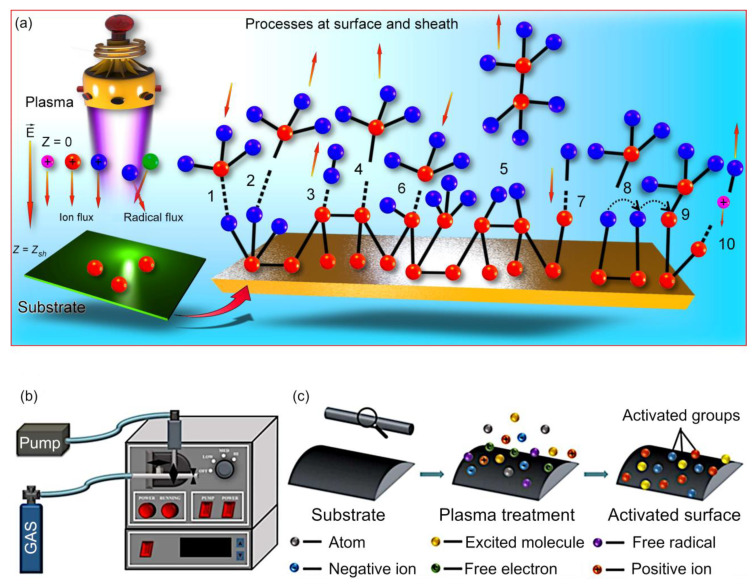Figure 1.
(a) When the surface of the substrate is exposed to plasma, multiple reactions between reactive molecules and radicals can lead to the formation of a film. In plasma, the ions and radicals are formed and accelerate toward the surface. Once they arrive at the surface of the substrate, the following reactions may take place: (1) adsorption and (2) desorption of reactive molecules; abstraction of H by (3) H radical and (4) other radicals; (5) reactive molecule abstraction by radical; direct chemisorption of (6) reactive molecules, and (7) H onto dangling bond; (8) transfer of adsorbed molecules on hydride sites; (9) chemisorption of adsorbed molecules into dangling bonds; and (10) sputtering of mono-hydride sites by ions. Reproduced Marvi et al. (2017) [29] under conditions of the BY-NC license. Diagram of the plasma treatment equipment: (b) plasma device; (c) mechanism of plasma interaction with the polymer surface. Reproduced from Lu et al. (2019) [30] under conditions of the CC BY license.

